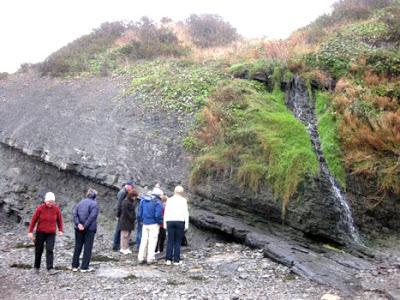
Joggins Fossil Cliffs, Nova Scotia: Visitors listen to a guide from the Joggins Fossil Centre
My friend and fellow children’s book writer Caroline Hatton explored the Joggins Fossil Cliffs, on the shore of the Bay of Fundy in Nova Scotia, Canada, in October 2014. She wrote this article especially for her friend Charlie, a very young, budding fossil scientist.
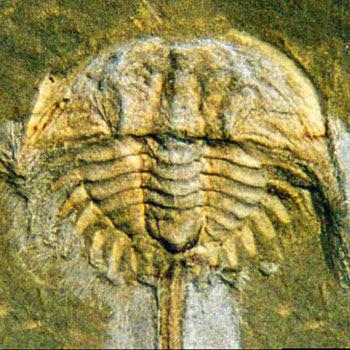
Fossil Belinurus(extinct animal)Credit: Courtesy of the Joggins Fossil Centre
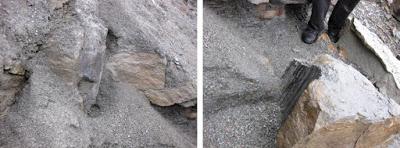
Matching cast fossil (left) and mold fossil (right) of tree trunk
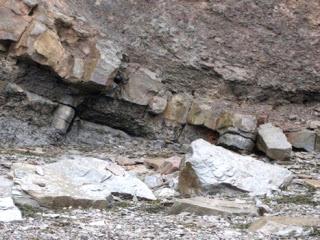
Can you spot the two chunks of fossil tree trunks?
Then as Atlantic Ocean waves gradually dug the Bay of Fundy, they carved the Joggins Cliffs and exposed the fossils, much like cutting the first slice of a giant cake and taking it away to reveal the layers inside.
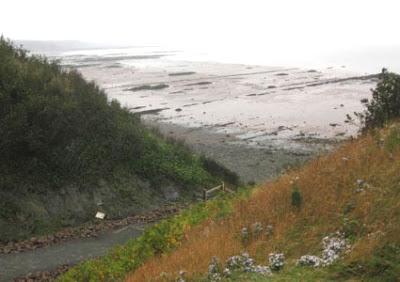
Path from top of cliffs to stairs to beach
Inside the Joggins Fossil Centre at the top of the cliff, I saw fossils (like the one in the photo at the top of this page) and learned about them. Then I followed a guide down the path for a walk along the beach where he taught me and the other visitors what to look for. Soon everyone spotted fossils in the rocks on the beach or on the cliff. Collecting fossils is not allowed, but keeping human-made objects, such as sea glass (broken glass polished by sand and waves) is okay. Taking photos is the best!
Fossil: standing tree trunk with attached root and rootlets
The fossils of the Joggins Cliffs are special because the forest and the animals are preserved as they lived. And there are fossils of many kinds of plants and animals, telling the story of life in the ancient forest. The Joggins Fossil Cliffs are like an ancient book written in stone. They are a UNESCO World Heritage Site, a treasure for everyone on Earth.
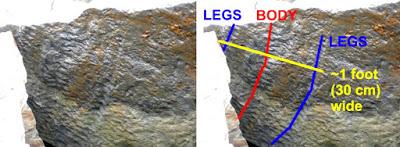
Fossil track of giant millipede
Of all the fossils that the guide showed us, the one I liked best was the track of a giant millipede. Experts think that when it was alive, it might have been 6 feet (2 meters) long! I’m glad I live now and it doesn’t.The Bay of Fundy is home of the world's highest tides, rising and falling up to 42 feet (13 meters) a day at Joggins. In strong storms, waves pound away the base of the Joggins Cliffs and expose new fossils. Who knows, the next new fossil, perhaps of an insect or reptile never known before, might be discovered by a kid!
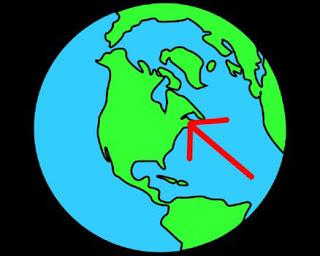
Location of the Joggins Fossil Cliffs
Joggins is a small community in western Nova Scotia in Canada. The area was known to the Native American Mi'kmaq people as "Chegoggins" meaning place of the large fish weir, a name modified by French and English settlers to Joggins. Now the town is famous for its fossils.For more info
See an artist’s vision of the prehistoric forest and more at http://jogginsfossilcliffs.net/.
Read a scientific description of the Joggins Fossil Cliffs at http://www.whaton.uwaterloo.ca/waton/s931.html
AcknowledgmentMany thanks to Melissa Grey, Curator, Joggins Fossil Institute, for fact-checking this post.
